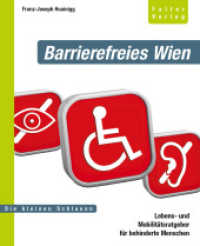Full Description
Real Nursing Skills 2.0the complete foundation for competency in performing clinical nursing skills. This updated and enhanced volume in the Real Nursing Skills series consists of an interactive DVD-ROM with comprehensive procedures and rationales demonstrated in hundreds of realistic video clips, animations, illustrations, and photographs. For each skill, students will review: Purpose * Delegation * Preparation * Procedure * Post-Procedure * Expected Outcome * Unexpected Outcomes * Documentation * and Variation (if applicable). This is the only skills series designed to help students visualize how to perform clinical nursing skills and understanding the concepts and rationales for each skill. Throughout the videos, students will experience the real-life aspects of: therapeutic communication between the nurse and the client, the client's reaction to invasive skills, and cultural, gender, and age diversity among nurses and clients.
Contents
Cr> Basic Code Management. Checking the Emergency Crash Cart. Elimination Management. Performing a Peritoneal Dialysis. Neurological Management. Measuring Intracranial Pressure Monitoring (ICP). VARIATION: Care of ventriculostomy drain. Respiratory Management. Assisting with Insertion and Management of Closed Chest Drain. Changing a Disposable Chest Tube System. Assisting with Discontinuation of a Chest Tube. Suctioning a Mechanically Ventilated Client. VARIATION: In-Line SuctionSetting Up and Assisting with Intubation. Nursing Care of the Client with an Endotracheal Tube. Checking Cuff Pressure. Tissue Perfusion Management. Removing a Femoral Sheath. Performing an Allen's test. Withdrawing arterial blood samples. Removing an arterial line. Performing a central line set up and insertion. Electrode placement for ECG and cardiac monitor. VARIATION: Three Lead Electrode Placement for ECG and Cardiac Monitoring.Performing Defibrillation. Performing Cardioversion with Paddles.Performing Automatic electric defibrillation. Assisting with Insertion of transvenous pacing. Performing Transcutaneous pacing. Nurse's Role in Pulmonary Artery (PA) catheter insertion. Setting Up, Attaching, and Performing Hemodynamic Monitoring on a Client. Checking Cardiac output.








